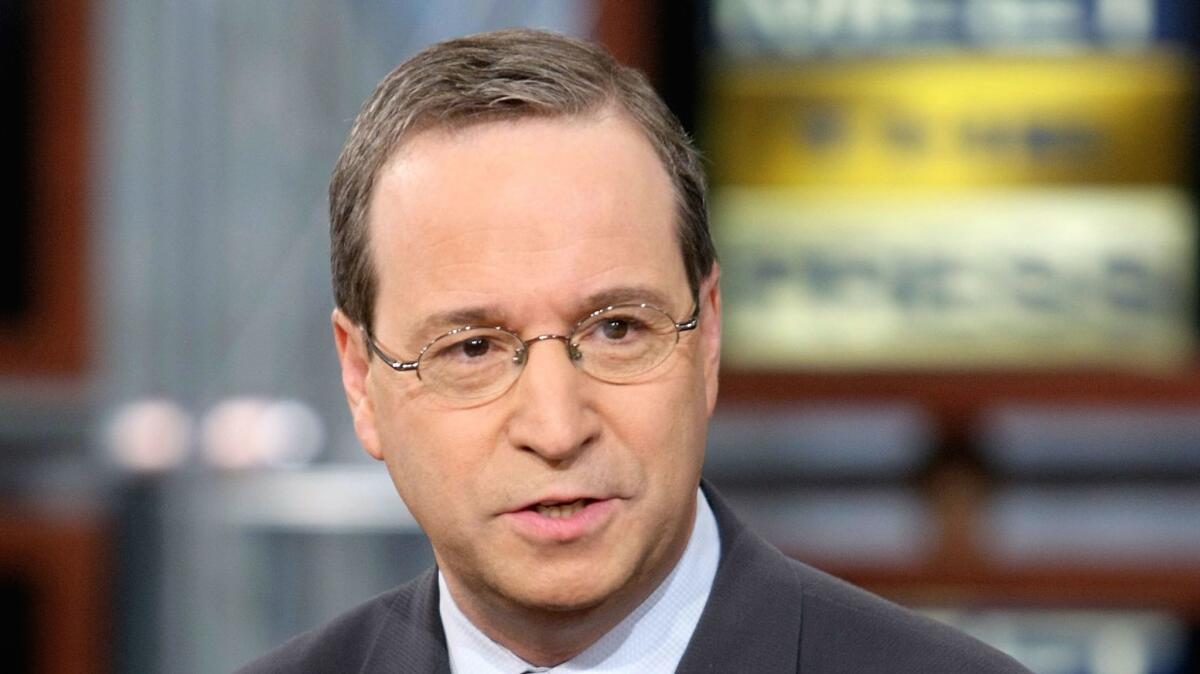Column: I’ve chronicled 23 years of unrelenting change in The Times. This is my last weekly column

- Share via
The first time I saw Los Angeles was late on a Saturday many years ago. I was flying here as a young reporter from Washington D.C. As the plane descended, the carpet of lights that is Los Angeles at night rolled out below me. Eventually, in the distance, I could see a dark ribbon of ocean. After I landed, my host drove me along Sunset Boulevard through the electric hum of Saturday night. Billboards loomed over us like the walls of a canyon. It all felt immense, unbounded and uncontainable. I was hooked.
I have spent the remainder of my career shuttling between Washington and Los Angeles. I spent nearly two decades of that time working for the Los Angeles Times, initially in L.A. and later in Washington. For the past ten years, I have worked at the Atlantic and National Journal magazines, initially in Washington and later in Los Angeles.
The one constant through those changes has been this weekly column. It began in summer 1994, shortly after I had moved back from Los Angeles to Washington to cover the Bill Clinton presidency. It has appeared in the print version of The Times virtually every week since. After 23 years, this will be the last of those columns.
That period, needless to say, has been one of unrelenting change — for the media, L.A., California and the nation. When the column launched, California was nearly three-fourths of the way through the governorships of Republicans George Deukmejian and Pete Wilson, who between them held that job for 16 consecutive years. In Washington, Democrats were nearing the end of 40 uninterrupted years as the majority party in the House of Representatives. Today, Democrats dominate every statewide office in California and Republicans have controlled the House for 20 of the past 24 years.
It seems implausible today, but eventually we may recognize that we can’t make America great ‘again’ without nurturing its future.
Both turnabouts reflect the same dynamic: an overlapping racial, generational, class and geographic realignment that has reshaped the American political landscape. Since the column launched, we’ve passed a succession of demographic milestones.
Whites without college degrees represented a majority of America’s population for almost all of our history — but fell below half during George W. Bush’s presidency and have continued to decline since. Kids of color became a majority of America’s K-12 students during Obama’s second term; sometime after 2020 kids of color will become a majority of all Americans under 18. Changes in the economy (with the shift toward an information based economy) and the culture (with the advance of gay rights, among other evolutions) have been equally propulsive. California has represented the forward edge of all these transitions.
Inevitably, this column has tried to make sense of the daily headlines at home and around the world. But its goal has been to chronicle these tectonic changes, and how Americans have responded to them.
We have grown vastly more diverse, but also more divided. As I’ve written many times, I believe the principal fault line in American politics and society is between the groups that largely welcome these demographic, economic and cultural changes, and those that view them as a threat to America’s fundamental values, and to their own interests.
That clash between the Democratic “coalition of transformation” and the Republican “coalition of restoration” has produced a politics that is volatile, polarized and vehement. Since the 1990s, neither party has sustained a lasting national advantage. Cooperation between them has virtually vanished in Washington (as well as many states) and red and blue voters have pulled away from each other, choosing to live as segregated tribes. As the 2016 election demonstrated, the political chasm between urban and non-urban America might be the widest since the 1920s. As I travel among the states now, this seems to me at times barely one country.
It’s easy to look at these trends and project a future of deepening enmities and unraveling attachments. But, as has often been true, we are more interdependent than our politics allows. America’s increasingly diverse younger generations are our future workers, consumers and taxpayers. Ultimately the preponderantly white older generations need those young people to succeed to keep the economy advancing — and not incidentally to provide the payroll taxes that will fund Social Security and Medicare for their retirements. It seems implausible today, but eventually we may recognize that we can’t make America great “again” without nurturing its future.
It’s been an honor to explore these issues for so long in these pages. I have worked with smart, generous and funny colleagues and legendary editors (I think especially of Shelby Coffey whose faith in me changed my life, and John Carroll, who set a towering standard of excellence and decency). I have benefited from all who read, responded and challenged me for all of these years.
I will still be grappling with the effects of change in other venues (theatlantic.com and CNN.com). And I will continue to find inspiration in the boundless energy and creativity of Los Angeles. The city at times stumbles, flails and fails. But it is always a place where the future happens first. Long ago, the lights of Los Angeles mesmerized me. I still believe they light the path to what America will next become.
Ronald Brownstein is a senior editor at the Atlantic. [email protected]
Follow the Opinion section on Twitter @latimesopinionand Facebook
MORE FROM THE OPINION SECTION
With Obamacare repeal off the table, will Republicans start trying to actually improve healthcare?
Bill Nye on the terrifying ascendancy of American ‘dingbatitude’
With Obamacare repeal off the table, will Republicans start trying to actually improve healthcare?
More to Read
A cure for the common opinion
Get thought-provoking perspectives with our weekly newsletter.
You may occasionally receive promotional content from the Los Angeles Times.










